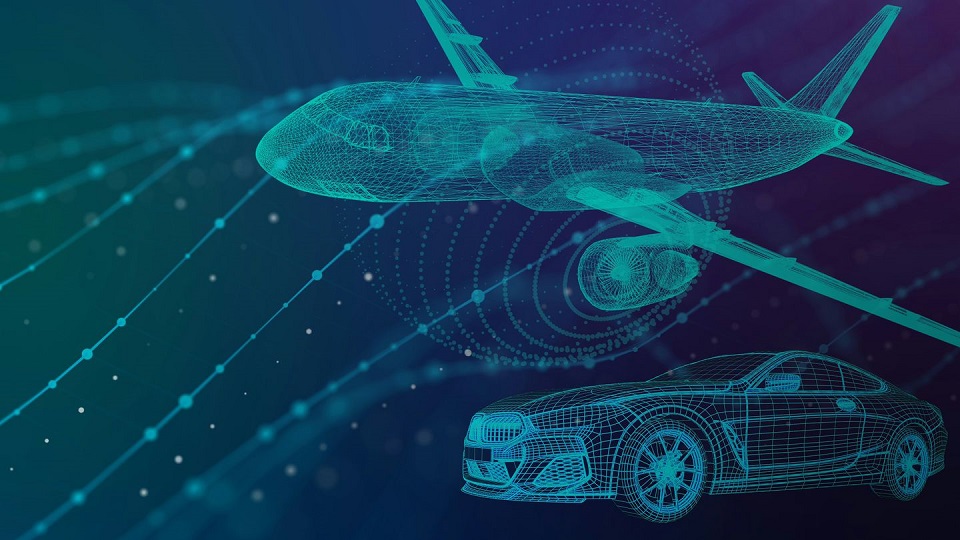Aerospace
Airbus and BMW Group launch Quantum Mobility Quest

Airbus and BMW Group have joined forces to initiate a groundbreaking global Quantum Computing Challenge named “The Quantum Mobility Quest.” This unprecedented collaboration aims to address longstanding challenges in aviation and automotive industries that traditional computers have been unable to overcome.
Marking a historic milestone, this challenge represents the inaugural endeavor of its kind, uniting two major players in their respective industries to leverage quantum technologies for tangible industrial applications. The objective is to unlock possibilities that can lead to the development of more efficient, sustainable, and secure solutions, shaping the future of transportation.
Even the most advanced computers available today cannot perform some of the most complex operations. However, quantum computing has the potential to greatly increase computational power. This cutting-edge technology may be especially important in modelling different industrial and operational processes for data-driven industries such as transportation, providing avenues to influence the development of future mobility goods and services.
Prospective challengers are requested to choose one or more of the following problem statements: enhanced corrosion inhibition with quantum simulation, future automated mobility with quantum machine learning, more sustainable supply chain with quantum optimisation, and improved aerodynamics design with quantum solvers. Besides, applicants may submit their own quantum technologies, which could be used to create native applications in the transportation industry that yet to be explored in the transportation sector.
By the end of 2024, a jury made up of top quantum experts from around the world will review the submitted proposals in collaboration with experts from Airbus, BMW Group, and AWS. The winning team in each of the five challenges will receive a €30,000 prize.
Registration opens today, and submissions will be accepted from mid-January through April 30, 2024 here: www.thequantuminsider.com/quantum-challenge.

Aerospace
Boeing Transfers Rocket Stage to NASA, Paving Way for Human Moon Mission

Boeing has achieved a significant milestone by providing NASA with the second core stage of the Space Launch System (SLS) rocket.
This crucial component, crafted at NASA’s Michoud Assembly Facility (MAF), is set to propel the Artemis II crew into lunar orbit, marking humanity’s return to deep space after a 50-year hiatus.
The monumental Boeing-built rocket stage, the largest element of the Artemis II mission, will embark on a journey aboard the Pegasus barge, traveling 900 miles to NASA’s Kennedy Space Center.
Comparison of two legendary aircraft B777x vs B747 aircraft:Click here
Upon arrival, it will be meticulously integrated with other essential Artemis II components, including the upper stage, solid rocket boosters, and NASA’s Orion spacecraft within the iconic Vehicle Assembly Building. This intricate integration process is a vital step toward the eagerly anticipated Artemis II launch, slated for 2025.
“Boeing-built products helped land humankind on the moon in 1969, and we’re proud to continue that legacy through the Artemis generation,” remarked Dave Dutcher, vice president and program manager for Boeing’s SLS program. “Together, with NASA and our industry partners and suppliers, we are building the world’s most capable rocket and paving the way to deep space through America’s rocket factory in New Orleans.”
NASA, Lockheed Martin Reveal X-59 Quiet Supersonic Aircraft:Click here
The delivery of Core Stage 2 marks a significant achievement in the evolution of the SLS rocket. Towering over 200 feet and powered by four RS-25 engines, this core stage, coupled with two solid-fueled booster rockets, will generate a staggering 8.8 million pounds of thrust. This immense power is crucial to launching Artemis II and future missions into the vast expanse of space.
The SLS rocket stands unparalleled in its capability to transport both crew and substantial cargo to the moon and beyond in a single launch. Its extraordinary capacity will facilitate the delivery of human-rated spacecraft, habitats, and scientific missions to destinations including the moon and Mars, ushering in a new era of space exploration.
-

 Travel1 week ago
Travel1 week agoAir India to Expand US Operations with Three New Routes After a Decade
-

 Travel2 weeks ago
Travel2 weeks agoWhy We Should Avoid These Stamps in a Passport
-

 Airlines1 month ago
Airlines1 month agoInvestigations Reveal Fake Chinese Titanium in Boeing and Airbus Jets
-

 Tech4 weeks ago
Tech4 weeks agoChina’s CATL Plans 1,800-Mile Electric Plane Launch by 2027
-

 Airport3 days ago
Airport3 days agoTop 10 Largest Airports in the World by Size
-

 Aerospace4 weeks ago
Aerospace4 weeks agoChina’s Fighter Jets Turn Wings into Autonomous Drones
-

 Airlines4 days ago
Airlines4 days agoAir India Rolls Out A350s for Delhi-New York JFK and Newark Routes
-

 Defence3 weeks ago
Defence3 weeks agoBoeing Enhances Chinook with New Engines and Block II Upgrades at $96 Million







